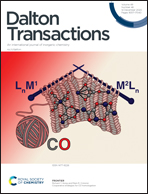Abstract
The synthesis and characterization of heteromultimetallic complexes has been one of the biggest challenges faced by inorganic chemists in the last few years. Here, the physical nature behind the relative stability of tri-heteronuclear complexes, involving the [M(PR3)]+ (M = Au(I), Ag(I) and Cu(I); and R = Ph and H) cation bridged by the [Fe(CO)4]2− anion, at the relativistic DFT-D3 level of theory is presented. Although the synthetic route to afford the [Fe(CO)4(AuPPh3)2] complex has been known for a long time, information about its copper and silver counterparts is scarce. The bonding situation is addressed via Kohn–Sham molecular orbitals coupled with a canonical energy decomposition analysis as the primary technique. The results show that complexes whose metal portion M–Fe–M is bent are more stable than linear ones. This stems from the dispersive interactions between the phenyl groups, but this also supports the presence of aurophilic d10–d10 interactions. The bonding between the [Fe(CO)4]2− and [Au–PPh3]+ fragments has a chiefly electrostatic character, but orbital interactions also represent a non-negligible role, as evidenced by the presence of : (i) σ-donation from the iron-carbonyl groups to the metal-phosphorus fragment; (ii) small π-donation from the metal to the iron center; and (iii) inner fragment polarization. The description of the metal–metal bonding situation in these complexes provides valuable information, useful to guide the synthesis of unprecedented multimetallic complexes containing coinage metals and other transition metals.



 Please wait while we load your content...
Please wait while we load your content...